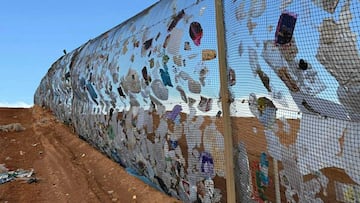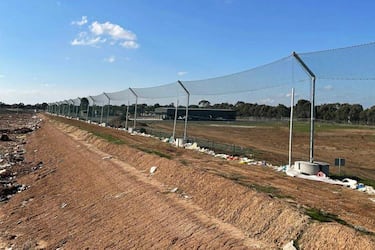Australia has 6,200 miles of fencing surrounding the entire country: without it, thousands of tons of trash would sweep through farms and cities
Specialist companies are racing to contain wind-blown waste as Australia struggles with rising consumption and growing environmental pressures.

Every year, Australia sends about 20 million tons of waste to landfill. Yet a portion of that trash never gets buried: strong winds blow it across the landscape, spreading pollution in all directions. To deal with it, the government has rolled out more than 6,200 miles of specialized fencing, forming an invisible network that protects farms, highways and ecosystems from a potential environmental disaster.
What are Australia’s “litter nets”?
Behind this work sits an industry almost no one ever talks about – one responsible for installing and maintaining the so-called “litter nets.” These structures, several feet high, surround landfills and recycling centers across the country.
According to Vahan Tchilinguirian, spokesperson for Litter Nets Australia, the barriers are essential to stop plastics and other lightweight materials from invading coastal or rural areas. “If they weren’t there, you’d have litter across farms and roads,” he told Yahoo News. “Birds and cattle would potentially choke and die,”

Companies in this sector step in when Australia’s Environmental Protection Authority receives a complaint about scattered waste. Technicians then visit the site, assess the issue and design a tailored solution. The nets are anchored to withstand winds of up to 62 miles per hour, and their mesh size varies depending on the facility: 40 millimeters for landfills and 20 millimeters for recycling plants, where they must trap even microplastics.
The litter-netting boom in Australia
Even as waste-management technology grows more sophisticated – including innovations like FOGO bins – fences remain the most effective solution. Their design has barely changed in more than two decades, yet they continue to play a crucial role in controlling both physical and visual pollution. Interestingly, the companies manufacturing these nets supply more than just environmental clients. The same structures are used on golf courses to catch stray balls, or in industrial zones where drifting lightweight materials need to be contained.
With rising consumption and a growing population, experts warn that managing waste in Australia will only become more difficult. For now, though, litter nets are doing their job and keeping a lid on the trash that threatens the country’s ecosystems.
Related stories
Get your game on! Whether you’re into NFL touchdowns, NBA buzzer-beaters, world-class soccer goals, or MLB home runs, our app has it all.
Dive into live coverage, expert insights, breaking news, exclusive videos, and more – plus, stay updated on the latest in current affairs and entertainment. Download now for all-access coverage, right at your fingertips – anytime, anywhere.
Complete your personal details to comment